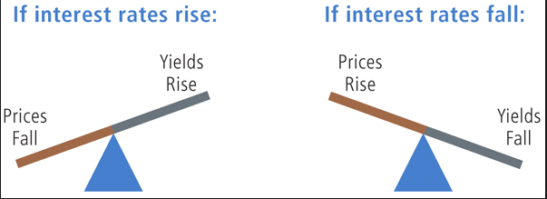Why Stocks Drop When Interest Rates Rise

- Jun 21, 2018
- admin
- Investing
Most people know that bond prices and interest rates have an inverse relationship. When interest rates increase, bond prices decrease and vice versa.
But these days I’m often asked what happens to stocks when interest rates rise. Most people know that historically, there has been a strong inverse connection between interest rates and stock prices.
What’s been confusing them lately is that stocks have continually hit new highs at the same time the Fed has been raising interest rates.
Due to the severe consequences this could have on your portfolio, I thought I’d spend some of my space today addressing this very subject.
Historically, there is a very strong relationship between stock prices and interest rates. Specifically, whenever interest rates have risen, stock prices are soon to decline.
But these days we have a bit of an anomaly: the Fed has raised interest rates and the stock market has been hitting new multi-year highs. To say this is rare throughout economic history would be an understatement.
The reason the stock market hasn’t yet felt the painful effects of rise interest rates is because nobody has been paying attention to the Fed while they’ve been tightening.
Sure, they’ve increased short term interest rates. But most investments are made in long-term interest rate instruments. And the price of long-term interest rates are determined by buyers and sellers in the bond market.
And up until recently buyers and sellers of long-term bonds ignored the Fed.
When the Fed raised rates, long-term bond investors pretended they didn’t hear him. The result? They kept interest rates low and the yield curve inverted.
But that seems to be changing as long-term interest rates have been steadily marching higher the past month or so.
And the fact that the stock market is at multi-year highs and interest rates are rising should have you as a stock investor very concerned.
Let me explain why you should be concerned:
There are many reasons stocks drop in rising interest rate environment. One of the most important is the effect rising interest rates have on the “earnings yield” of any stocks.
What the earnings yield tries to do is explain the price of stocks in relation to long-term interest rates.
For example, let’s say that you were looking at Company A that was selling at $10 per share. If the company earned $1 per share in earnings, you would say the earnings yield was 10 percent ($1/$10).
Most professional investors compare the earnings yield in stocks with the earnings yield of bonds. Using the example above, Company A has an earnings yield of 10 percent. Compare that to a 10-year U.S. government bond with a yield of 6 percent. Thus, professional investors argue that there is a 4 point spread between investing in Company A and investing in government bonds (10 percent minus 6 percent).
Is a 4 point spread enough to satisfy the risk of investing in the stock versus the safety of investing in the bond? That depends on your definition of risk. I will tell you though that many people believe that the spread between these two number should be a minimum of 4 percent. If it isn’t, money will leave stocks and go into bonds as investors believe they aren’t being compensated correctly for the risk of owning stocks.
If an investor believes he has to get a minimum of 10 percent when he invests in stocks (versus risk free bonds), what will he do when interest rates go higher?
Let’s take Company A from above as an example.
If the Fed raises rates 1 percentage point (a huge number) the 10-year U.S. government bond will yield 7 percent, as opposed to six percent. But remember, the spread between government bonds and stocks must stay fixed at four percent. The four percent “spread” compensates many investors for the risk associated with investing in the stock versus bonds.
That means that people will only invest in Company A if the earnings yield is now 11 percent (7 percent plus 4 percent risk-premium)!
But Company A only has $1 in earnings. For it to provide its investors with an 11 percent yield its stock has to drop down to roughly $9 per share. ($1 in earnings/$9 stock price yields roughly 11 percent).
Thus you can see the basic theory behind the price of money and the price of stocks.
–By Dylan Jovine
